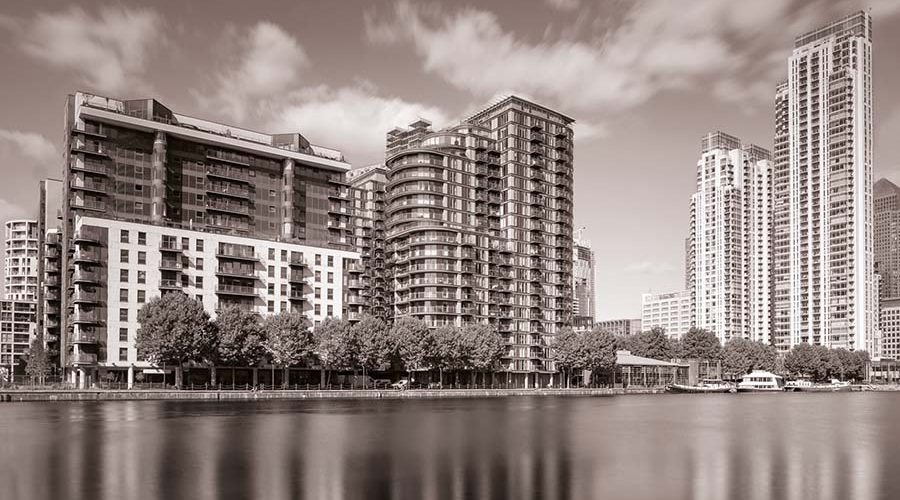Now we’re in 2020; we are entering a transformational decade for building construction. Gail Cook, Global Head of Marcoms at Glen Dimplex Heating and Ventilation, predicts the key building trends we can expect to see in the coming decade.
GDHV
Population projections suggest that 340,000 new homes are needed each year in England until 2031. Set this against the Government’s targets to eliminate greenhouse gas emissions by 2050 and the building industry must adapt.
With its high impact on our natural environment, the building sector has an obligation to reduce its carbon footprint. Almost half of all emissions (45%) in the UK are linked to construction, operation and maintenance of the built environment. As a result, the challenge today is to provide high-quality, attractive homes that are also low-carbon,
energy and water-efficient and climate-resilient.
Customers are also demanding buildings that are better for the environment and the climate. Indeed nearly 8 out of 10 people (78%) in the UK believe that the environmentally sustainable performance of a building is important when choosing a new home.
Going modular
As the industry responds to changing requirements and demand, there are growing trends in green building technologies that will become more popular as we move through the next decade. This is especially relevant given all new housing must be Nearly Zero Energy (nZEB) by December 2020, paving the way for ultimately achieving Net-Zero Carbon (NZC) buildings.
Modular housing will also become more popular in the drive to deliver carbon-neutral construction. Often referred to as a ‘prefabricated building’, a modular build is pre-built in sections. Each of those sections is then transported to the location where the building will stand, and the building is assembled on-site.
Not only does a modular build require less time and labour, the controlled environment means it generates less material waste too. The Waste and Resources Action Programme (WRAP) shows that a 90% waste reduction can be achieved by increasing the use of off-site construction.
Modular buildings are subject to the same regulations and planning laws as traditional builds, but this won’t stop modular builds developing at a fast pace. Modular builds represent a quick way to rectify the housing shortage, and this will be a key driver in the growth of modular builds in the UK.
Modular buildings could emerge as the future of urban construction, given the increasing demand for urban homes. The United Nations Department of Economic and Social Affairs predicts that 68% of the world population will live in urban areas by 2050, so the ability to quickly construct quality urban housing could be crucial to ensuring that demand is met.
Croydon’s 101 George Street briefly held the title for the world’s tallest modular tower, standing at 135m in height and containing nearly 600 apartments. The title has since been taken by the Clement Canopy towers in Singapore. Both examples showcase how it is entirely possible to construct quality high-rise homes quickly in the urban environment.
One of the blockers to modular builds growing in popularity could be the fact that manufacturing pre-fabricated sections will require investment in factories and skilled workers to support. However, a collective of organisations that includes Homes England, Urban Splash and the largest modular house-building company in Japan, Sekisui House, has come together to support a £90m initiative that will see the building of modular homes increased in the UK.
Building materials turning green
Rethinking building materials and sourcing locally will contribute significantly to gaining nZEB status. Materials with practical and ecological benefits such as cross-laminated timber will, over time, usurp virgin concrete that uses more energy and depletes natural resources.
Fitting heat pumps and mechanical ventilation heat recovery (MVHR) systems will support high energy performance in new buildings and achieve low household bills, a double win for meeting carbon-cutting targets and the homeowner’s back pocket.
Renewable energy itself will continue to experience its surge in popularity, propelled by technology innovations. Advances in battery storage will help to combat the fluctuating natural sources of wind, solar and water. Cutting-edge sensors and devices will take smart technology to a new level, with heating, cooling, lights and water controlled in more intelligent ways.
The industry must show and tell
In an effort to address climate change, builders and engineers can embrace these green technologies in 2020 and beyond. The industry can also respond in other ways:
Understand the language of sustainability
The UK Green Building Council is working with the Government to help shape the meaning of the ‘net-zero’ terminology but understanding its precise definition and what it means for your business and your customers is essential. What is the shift to carbon-neutral buildings?
Educate customers
A home can have excellent energy efficiencies but maximising them is reliant on those who live there. Many construction companies now provide energy efficiency training to new residents and motivate them by sharing performance data on their
nZEB homes.
Make a declaration
Using products with Environmental Product Declarations (EPD) is becoming increasingly important for the construction industry. These green certifications demonstrate sustainability credentials, helping to improve a property’s long-term value and attract and retain tenants and residents.
Climate change and energy efficiency are all driving factors that will change the building industry as we know it in the coming decade. There is no silver bullet for global warming or the challenges generated by a growing, urbanised population. However, the building industry is a significant driver of social change and a substantial contributor to the environmental footprint.
As architects and engineers are forced to take these growing challenges into consideration, it’s important to remember that the buildings we inhabit need to be desirable, comfortable and affordable too. Modular buildings and materials that cause the least harm to the environment throughout their lifecycles present the building industry with an opportunity to overcome the challenges that changing legislation and intensifying demand will bring.









